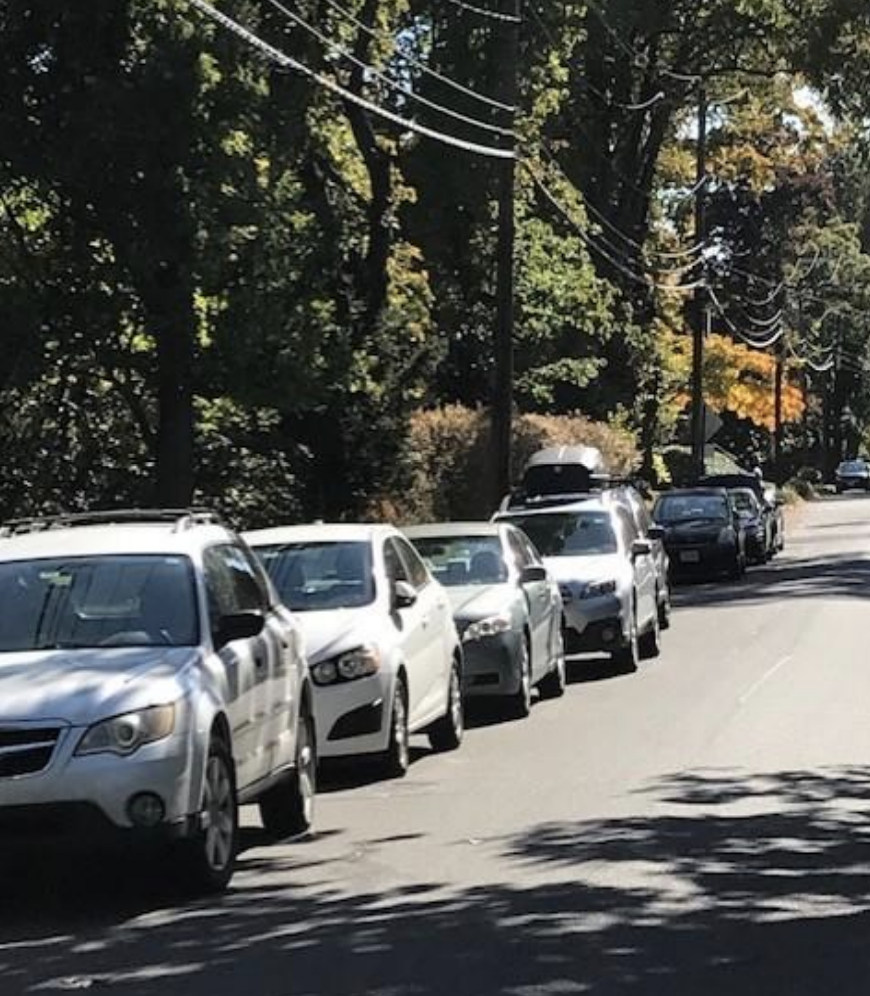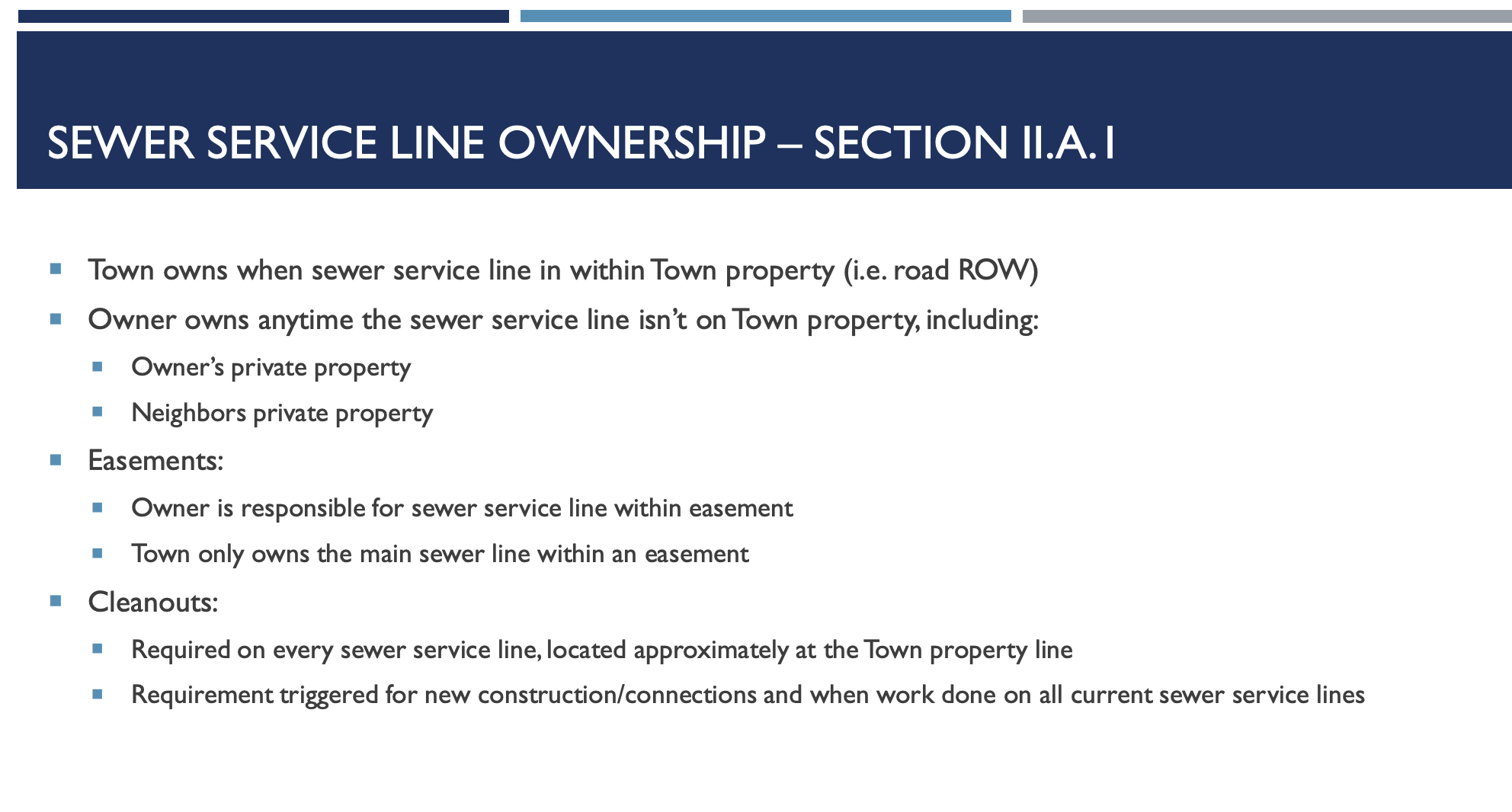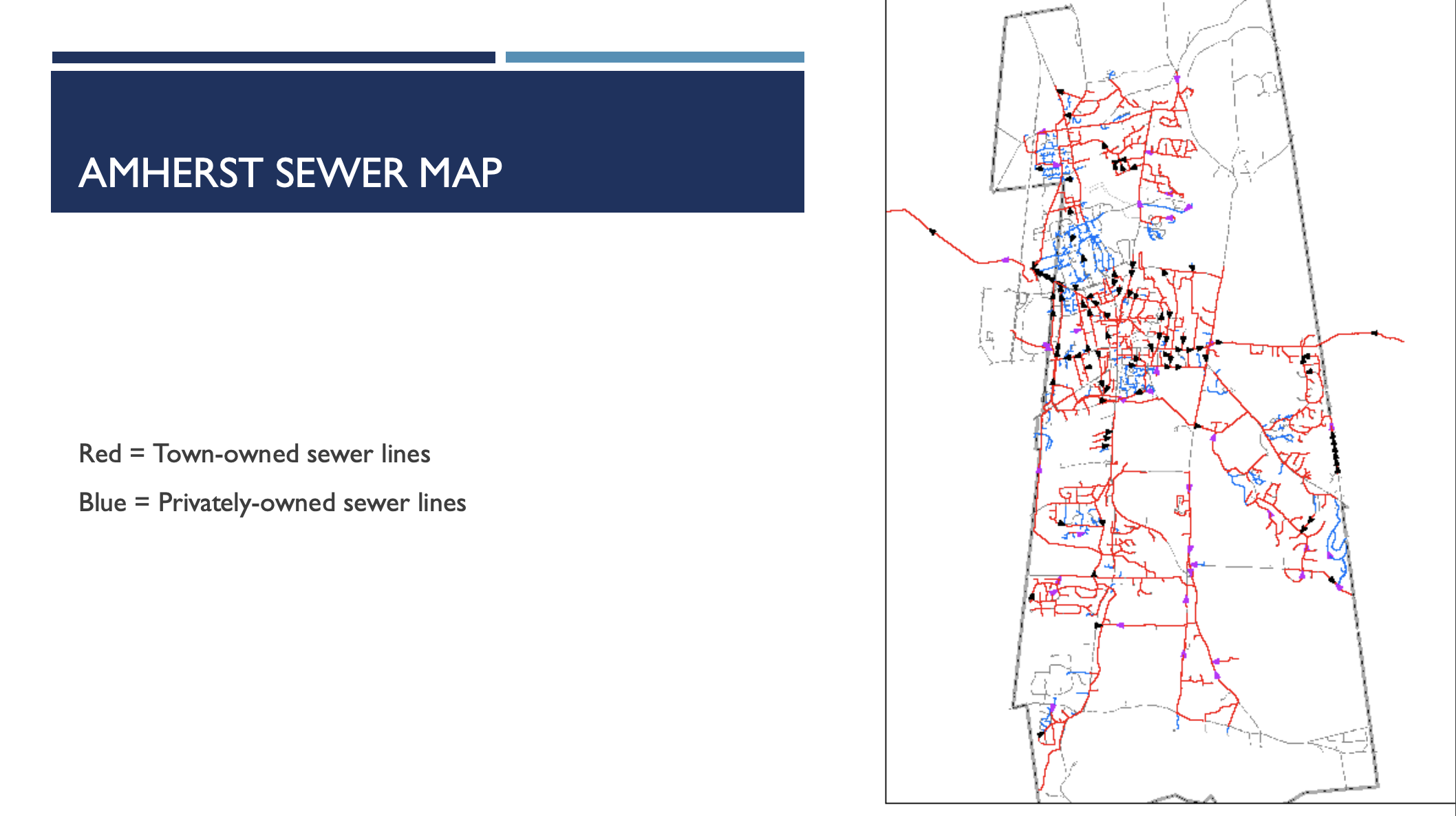TSO Recommends New Parking Regulations For Lincoln, Sunset, and Elm, And New Sewer Regulations

Commuter parking congestion on Lincoln Avenue. Photo: Jennifer Taub
Report On The Meeting Of The Town Services And Outreach Committee (TSO), October 20, 2022
Present
Anika Lopes (Chair, District 4), Dorothy Pam (District 3), Ana Devlin Gauthier (District 5), Shalini Bahl-Milne (District 5), Andy Steinberg (at large)
Staff: Guilford Mooring (Superintendent of Public Works), Amy Rusiecki (Assistant Superintendent of Public Works), Tim Nelson (Fire Chief)
Also: Councilor Jennifer Taub (regulation sponsor, District 4), Tracy Zafian (Chair, Transportation Advisory Committee)
On the agenda for the evening was a final discussion and a vote on proposed changes to parking regulations for Lincoln Ave, Sunset Avenue, and Elm Street and a vote to recommend new sewer regulations. Following substantial discussion, TSO voted unanimously (5-0) to recommend that the town council adopt the following new parking regulations for the aforementioned streets:
-To prohibit parking on the East Side of Lincoln Ave. between McClellan St. and Amity St. from 8 a.m. to 5 p.m., Monday through Friday from September 1 to May 30
-To prohibit parking on the east side of Sunset Ave. between Elm St. and Amity St. at all times
-To prohibit parking on one side of Elm St. at all times
TSO also voted unanimously (5-0) to recommend that the Town Council adopt proposed new sewer regulations, following receipt of additional input from the Finance Committee.
Parking Regulations Discussion
The discussion emphasized that there are persistent problems with parking on Lincoln and Sunset and conveyed an expectation that these will not get better when 800 new residents move into new dorms at the end of the street next fall. Parking has been a persistent problem on the street for a long time and most agreed that some intervention is needed.
Councilor Jennifer Taub, the sponsor of the proposed changes, related a story from the previous weekend that had been relayed to her in an email from a constituent, describing dangerous parking congestion on Lincoln on Saturday afternoon that required intervention from parking enforcement officers, as well as an incident where an ambulance had difficulty getting through on an emergency call.
Chief Nelson responded that the ambulance crew reported that they were not delayed on that call and had no difficulty getting to the patient and treating them. Nelson reported that there were two calls to the neighborhood that day and that one required three minutes to respond and the other 3.5 minutes.
Tracy Zafian shared her own experiences from the weekend. She reported that she was on Sunset Avenue soon after the UMass football game ended. People were parking on the west side of the street (where no parking is allowed), and even though there were no cars parked on the east side it was clear that there was only one lane for traffic and that the scene was pretty chaotic. “There’s just not enough room,” she said. Later in the afternoon, she said, a fire truck tried to turn onto Fearing Street from Lincoln but couldn’t because cars were illegally parked on Fearing. She said she wonders how it will impact emergency services when the dorms open up at the end of Lincoln.
Ana Devlin Gauthier suggested that the safety issue evident over the weekend wouldn’t be resolved by the proposed parking changes. “Perhaps it’s not safe all of the time,” she said. She said that the proposals still strike her as discriminatory because people who work and study at the university would be most impacted by them..
“We can’t allow [navigating on those streets] to get any worse, and it’s hard to predict what will happen once those dorms open up.”
Tim Nelson, Amherst Fire Chief
Guilford Mooring noted that Lincoln and Sunset pose different challenges. Lincoln is wider and attracts more traffic because it offers a straight shot from Route 9 to campus. Sunset, however, is not a very good commuter route to campus. The problems created by regular commuters to campus are more acute on Lincoln.
Nelson reported that the Amherst Fire Department (AFD) can still navigate that neighborhood effectively, “but we can’t allow it to get any worse, and it’s hard to predict what will happen once those dorms open up.”
Dorothy Pam said, “We have been talking about this for years. And the problems persist. It’s going on all of the time. I think that maybe we just need to ban parking [on Lincoln]. I would like to change the motion to banning parking on Lincoln. 24/7. And on Sunset, let’s stick with the original motion.” [Note: her suggestion for a full time ban was apparently not accepted as a formal motion.]
Andy Steinberg said, “I am not convinced that there is a big gain with a 24-hour ban. I favor the restrictions that were passed at the last TSO and defeated by a tie vote at council — a ban on both sides of the street during the day from early September to mid-May.” Steinberg continued, “The largest accumulation of cars appears to be during the day. We have received comments from people living on Lincoln who are concerned about not having parking for their guests. When people are entertaining, they largely need space on evenings and weekends, and there is less competition with commuters at that time. And parking is not much of a problem in the summer months.”
Shalini Bahl-Milne said that a parking ban would be a hardship for residents without driveways. She wondered where they, their guests, and their contractors would park.
Devlin Gauthier challenged the idea that there is a safety issue. “I am not convinced that there can’t be safe parking on one side of Lincoln. I hear from the fire department that they can get down the road. What I hear from the residents is that cars are parked end to end and blocking driveways and that’s a concern for them. I see the solution is to paint lines.”
Mooring responded, “We can paint lines but there is a cost to that. We can put in meters but there’s a cost to that. We can ticket, but there is a cost for that, and we’re already a bit low on manpower.”
Pam responded that the main point is not the ambulances but the visibility and accessibility to driveways with end-to-end parking. And she pointed out the problem of painted lines in New England, that for part of the year they will be covered with leaves or snow.
Bahl-Milne asked, “How do we resolve that some residents [of the town] want parking on these streets and some don’t. Removal of the parked cars is going to increase speeding on the street. My perception is that parked cars make things safer. Are permits an option or would that also be labor intensive?”
“I don’t understand why it is so hard to hear what the majority of people on the street are asking for. If we value the people who live in our community, then we have to listen to them.
Councilor Dorothy Pam (District 3)
Mooring responded, “Permits require enforcement labor. And the only permit program we have right now is resident permits. As for slowing down, initially parked cars slow things down, but when people get used to them they tend to speed up again.” Mooring noted that the 12 accidents on Lincoln over the last five years is a lot for a residential road.
Pam also responded to Bahl-Milne’s comment, saying “There’s no parking on my street and we do fine. As for what do the neighbors want, a considerable majority of those on that street [Lincoln] are asking for a change [with more restrictions]. We know what people want. Something that is simple and clear, something that could work. I don’t understand why Ana [Devlin Gauthier] says this is not a safety issue. If we can’t solve this and come up with a solution then I am going to lose whatever faith I have in Amherst government.”
Zafian shared that there are neighborhoods north of the campus that have parking bans 8 a.m. to 5 p.m. and that other neighborhoods in a similar situation have prohibited street parking altogether, so the proposed restrictions would be consistent with what is done elsewhere in town. “We’re one of the few [neighborhoods) in this proximity [to the university] that still have parking, which is why we are so popular.” She added that the safety issues are a lot less significant at off-peak times. She encouraged the councilors to impose a 24/7 no parking restriction for one side of Sunset and Elm streets.
Taub concluded, “We need to do some planning for when 800 new residents move into the neighborhood. We can’t just wait to see what happens. And there’s also the new townhouse development on Sunset.”
Pam concluded, “I don’t understand why it is so hard to hear what the majority of people on the street are asking for. If we value the people who live in our community, then we have to listen to them. And Guilford has told us that the street is too narrow to allow two-way parking.”
Anika Lopes pointed out that Town Manager Paul Bockelman had provided answers to many of the questions that had been posed the previous week in a memo that he had written to the council recommending the proposed restrictions. The memo also reviews the history of parking problems in the neighborhood and provides a rationale for the new restrictions.
Sewer Regulations
Amy Rusiecki, Assistant Superintendent of Public Works, offered a PowerPoint presentation on proposed new sewer regulations. The proposed new regulations can be viewed here. TSO voted unanimously (5-0) to recommend that the Town Council adopt the new regulations upon receipt of further input from the Finance Committee.
Among the changes are a change in sewer line ownership, similar to changes recommended for water line ownership, in which owners will only be responsible only for repairs within their own property line.

The new regulations also have adopted more specific language for prohibited substances.
Steinberg noted that the council as a whole is going to want a report on how the new regulations will impact sewer rates townwide. And several committee members wondered about the costs of adding new neighborhoods to the town sewer system and their effect on the system, as well as how they are prioritized. Steinberg indicated that these questions will be further explored by the Finance Committee.

